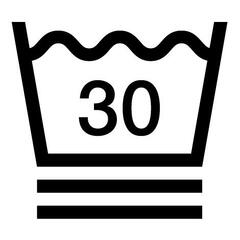Straps
If you're looking for better support on the shoulders, you'll find loops for adding straps inside the waistband of the trousers. The straps can be found on our website under reference 8751391
What components are used to give my trousers warmth?
To help keep you warm, we use recycled wadding insulation (60g/sqm). This synthetic polyester-based wadding traps more or less air, depending on the size of its fibres, to insulate you from the cold.
How is comfortable temperature measured?
We lab-test each of our products so that we can provide you with a indicative value on the item's comfort. This comfort indicator is measured without tights for trousers, and with a thermal t-shirt and a fleece for jackets. The measurement indicated is that of the external temperature in which the testers are neither warm, nor cold. Of course, this perceived temperature varies in line with the intensity of the activity and the metabolism of the individual.
How should I dress to avoid having cold legs on the slopes?
To keep your legs warm and dry, 2 layers of clothing are enough:
- 1 ski base layer to wick away perspiration.
- 1 ski trouser to protect against bad weather and provide warmth.
What is a membrane and what's it for?
The membrane is a very thin component applied to the inner surface of the outer fabric. This hydrophilic component prevents water from seeping in while wicking away the perspiration produced by the body. The membrane is unbeatable when it comes to staying warm and dry.
How is the waterproofness of your trousers measured?
The resistance of a fabric is measured by the height of a water column in mm that can be supported by the fabric (test based on the ISO 811 standard). The higher the pressure, the more waterproof the fabric. This component has a waterproofing resistance of 10000 mm resists the pressure of 10000 mm of water.
For skiing, we advise components rated 3000 to 20,000 mm.
Plus, here at Decathlon, we lab-test all of our waterproof products. This product has a score of 3/5
How can I be sure my trousers will give me proper protection in bad weather?
These trousers have been developed using a robust component and rigorous assembly that limit wind chill and prevent the passage of water to help you brave all weather (rain, snow, wind, etc). To check their water-resistance, the trousers were placed under a special shower, to reproduce the conditions faced by a skier. We have checked the waterproofness of this product in use in various weather conditions over several days.
Why are my trousers water repellent?
The water-repellent property of a fabric is its capacity to allow water to run off its surface without seeping in. These trousers feature water-repellent components to improve their resistance to bad weather. The fabric is made water-repellent by treating its outer surface. However, this property may deteriorate with use.
How can you restore the water-repellency of your trousers?
Bear in mind that the water-repellent feature can be reactivated. To do this, put the trousers in the tumble dryer on a synthetics programme for 10 to 15 minutes.
You can also use a waterproofing spray (sold in our stores): spray the product evenly over the entire garment, then leave it to dry for 10 to 12 hours).
How can I prevent snow from getting into my trousers?
The trousers have elasticated gaiters at the ankles to cover the boots. If you fall or come into contact with fresh snow, the seal created by the gaiter keeps the snow out.
How should you wash your trousers?
To optimise the performance and durability of your trousers, we recommend:
* Machine wash at 30°, synthetic programme.
* Turn the product inside out.
* Add a small amount of detergent. No softener.
* We recommend you wring it by hand.
* Dry on a hanger in a warm, well-ventilated place.
Do not dry clean. Do not place on a radiator.
To help you choose the right size
The model wears a size M and measures 175 cm.
Measurements:
Waist size: 67 cm
Hip measurement: 99 cm
Chest size: 90 cm




